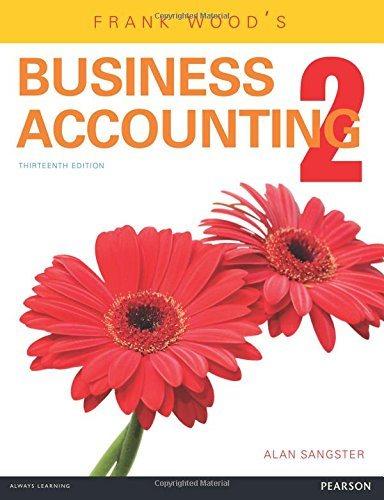Question
1. The classification of noncontrolling interest share as an expense and noncontrolling interest as a liability is preferred under: (a) Parent-company theory (b) Entity theory
1. The classification of noncontrolling interest share as an expense and noncontrolling interest as a liability is preferred under: (a) Parent-company theory (b) Entity theory (c) Traditional theory (d) None of the above 2. Traditional theory is most similar to parent-company theory in matters relating to: (a) Goodwill computations (b) Noncontrolling interest computations (c) Intercompany profit eliminations (d) Consolidated financial statement presentations 3. Traditional theory is most similar to entity theory in matters relating to: (a) Goodwill computations (b) Noncontrolling interest computations (c) Intercompany profit eliminations (d) Consolidated financial statement presentations 4. When consolidated income allocated to controlling stockholders under entity theory is compared to consolidated net income under traditional theory, one would expect consolidated net income under traditional theory to be: (a) Equal to consolidated income allocated to controlling stockholders under entity theory (b) Greater than consolidated income allocated to controlling stockholders under entity theory (c) Less than consolidated income allocated to controlling stockholders under entity theory (d) Greater or less depending on the relationship of investment fair value to book value 5. Consolidated financial statement amounts and classifications should be identical under the traditional, entity, and parent-company theories of consolidation if: (a) All subsidiaries are acquired at book value (b) Only 100%-owned subsidiaries are consolidated (c) There are no intercompany transactions (d) All subsidiaries are acquired at book value and there are no intercompany transactions 6. When the fair values of an acquired subsidiarys assets and liabilities are recorded in the subsidiarys accounts (push-down accounting), the subsidiarys retained earnings will be: (a) Adjusted for the difference between the push-down capital and goodwill from the acquisition (b) Credited for the amount of the push-down capital (c) Transferred in its entirety to push-down capital (d) Credited for the difference between the total imputed value of the entity and the purchase price of the interest acquired 7. The most consistent statement of assets in consolidated financial statements would result from applying: (a) Traditional theory (b) Parent-company theory (c) Entity theory (d) None of the above
Step by Step Solution
There are 3 Steps involved in it
Step: 1

Get Instant Access to Expert-Tailored Solutions
See step-by-step solutions with expert insights and AI powered tools for academic success
Step: 2

Step: 3

Ace Your Homework with AI
Get the answers you need in no time with our AI-driven, step-by-step assistance
Get Started


